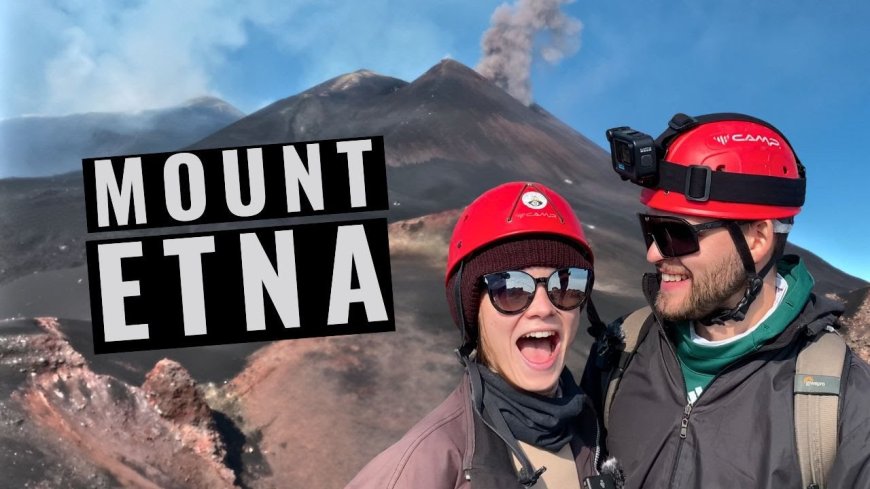Exploring Mount Etna: Europe's Most Active Volcano

Mount Etna is one of the most famous and powerful volcanoes on Earth. Towering above the eastern coast of Sicily, Italy, this fiery giant has captivated geologists, tourists, and historians for centuries. With a history of eruptions dating back thousands of years, Mount Etna is not just a geographical feature; it is a symbol of natural power, destruction, rebirth, and scientific wonder.
In this article, we will take an in-depth look at Mount Etna’s history, geography, volcanic activity, and cultural significance. Whether you're a geology enthusiast or a curious traveler, this guide will give you a comprehensive understanding of the dynamic force that is Mount Etna.
The Geography and History of Mount Etna
Mount Etna is located on the island of Sicily, just north of the city of Catania. It is the highest volcano in Europe, standing approximately 3,329 meters (10,922 feet) tall, though its height changes regularly due to frequent eruptions and crater collapses.
Mount Etna is situated between the African and Eurasian tectonic plates, making it a key area for studying plate tectonics and seismic activity. Its unique position also contributes to its high level of activity, making it the most active volcano in Europe and one of the most active in the world.
Key Facts About Mount Etna (Table Format)
| Attribute | Detail |
|---|---|
| Location | Eastern Sicily, Italy |
| Height | ~3,329 meters (varies with eruptions) |
| Type | Stratovolcano |
| First Recorded Eruption | ~1500 BCE |
| Last Major Eruption | Ongoing activity (most recent in May 2024) |
| UNESCO World Heritage Site | Yes (designated in 2013) |
| Nearest City | Catania |
| Tectonic Setting | Convergent boundary (African & Eurasian Plates) |
| Craters | Four summit craters, numerous lateral vents |
| Volcanic Status | Active |
Mount Etna's Volcanic Activity
Historical Eruptions
Mount Etna has been erupting for over 500,000 years. The first recorded eruption occurred around 1500 BCE, and since then, there have been hundreds of eruptions of varying intensity. Some of the most notable historical eruptions include:
-
1669 Eruption: One of the most devastating eruptions, destroying several villages and reaching the walls of Catania.
-
1928 Eruption: Completely buried the town of Mascali.
-
1991–1993 Eruption: A prolonged eruption that threatened infrastructure and led to innovative lava diversion tactics.
-
Recent Activity: Mount Etna has remained continuously active in the 21st century, with eruptions occurring as recently as May 2024.
Modern Monitoring and Safety
Today, Mount Etna is one of the most closely monitored volcanoes in the world. The Istituto Nazionale di Geofisica e Vulcanologia (INGV) maintains a network of seismic, satellite, and thermal sensors to predict and study eruptions. These monitoring systems help to minimize risk to local populations and provide critical data for volcanologists globally.
Mount Etna in List Format: Reasons It's So Unique
-
Oldest Active Volcano: Etna has a geological history that spans half a million years.
-
Height Variation: Its height constantly changes due to lava flows and crater activity.
-
Cultural Icon: Etna appears in Greek mythology and Roman history.
-
Agricultural Richness: The volcanic soil is incredibly fertile, supporting vineyards, orchards, and olive groves.
-
Lava Caves: The lava tubes formed by cooling flows offer a rare look into volcanic processes.
-
Tourism Hub: With cable cars, hiking trails, and ski resorts, Etna attracts thousands of visitors each year.
-
UNESCO Status: Designated a World Heritage Site for its scientific, cultural, and aesthetic value.
-
Scientific Laboratory: Its frequent eruptions make it an invaluable natural lab for volcanology.
Cultural and Historical Significance
Mount Etna has long held a place in mythology and literature. In ancient Greek mythology, it was believed to be the forge of Hephaestus, the god of fire and blacksmiths. The Roman poet Virgil also referenced it in his epic The Aeneid, describing its violent eruptions and mystical power.
Over centuries, local populations have lived in both awe and fear of Etna. Despite the risks, the land surrounding the volcano remains densely populated due to its fertile soil and strategic location. The people of Sicily have developed a unique cultural identity shaped, in part, by their coexistence with this natural force.
The Role of Etna in Modern Science
Mount Etna is more than just a volcano—it's a crucial resource for scientific study. Because of its near-continuous activity, it offers an unparalleled opportunity for researchers to study magma movement, eruption prediction, and the relationship between tectonic processes and volcanic behavior.
Some modern scientific uses of Mount Etna include:
-
Seismology: Studying earthquake patterns linked to volcanic activity.
-
Volcanic Gas Emissions: Monitoring CO₂ and SO₂ levels to forecast eruptions.
-
Remote Sensing: Using satellite imagery and drones for real-time monitoring.
-
Lava Flow Modeling: Simulating lava paths to protect infrastructure and improve urban planning.
Ecological and Environmental Impact
Mount Etna's ecosystem is as diverse as its geology. The mountain hosts multiple climate zones, from Mediterranean forests to alpine tundra near the summit. This biodiversity includes:
-
Chestnut and oak trees in the lower altitudes
-
Unique plant species that survive in ash-rich soil
-
Native wildlife such as foxes, wildcats, and numerous bird species
Eruptions can have both destructive and regenerative effects. While lava flows can wipe out vegetation, the mineral-rich deposits left behind foster regrowth and long-term ecological health.
Visiting Mount Etna
Mount Etna is a popular destination for both tourists and adventurers. The volcano is accessible through guided tours, cable cars, and hiking trails. Winter even brings skiing opportunities on its snowy slopes.
Top Attractions Around Mount Etna:
-
Etna Cable Car: Takes visitors partway up the mountain for scenic views.
-
Valle del Bove: A massive depression that offers a dramatic look into the mountain’s geology.
-
Lava Caves: Explore tunnels formed by flowing lava.
-
Zafferana Etnea and Nicolosi: Charming Sicilian towns with Etna-themed experiences.
Conclusion: The Living Heart of Sicily
Mount Etna stands as a testament to the raw and unpredictable power of nature. It is not just a geological marvel but a living, breathing force that shapes the environment, culture, and history of the region around it. From ancient myths to modern science, from destructive eruptions to fertile vineyards, Mount Etna represents the duality of creation and destruction that defines our planet.
Understanding and respecting Mount Etna is not just a matter of science or safety—it’s an appreciation of Earth’s enduring dynamism.
Have you ever visited Mount Etna or witnessed a volcanic eruption? Share your experience in the comments!
Let me know if you'd like this formatted for a specific platform like Medium or WordPress.






























